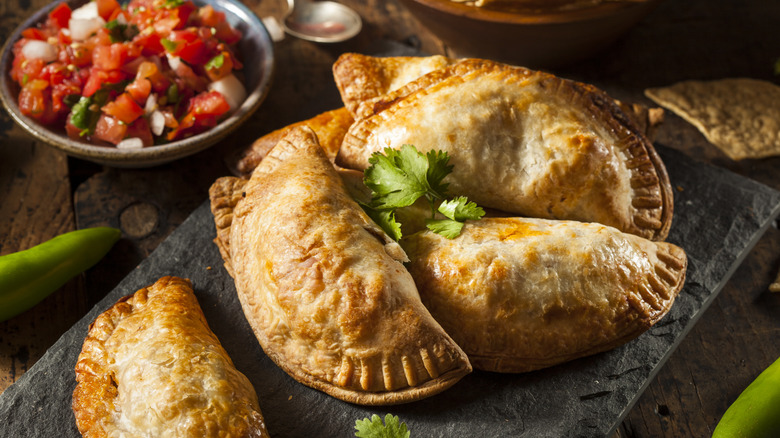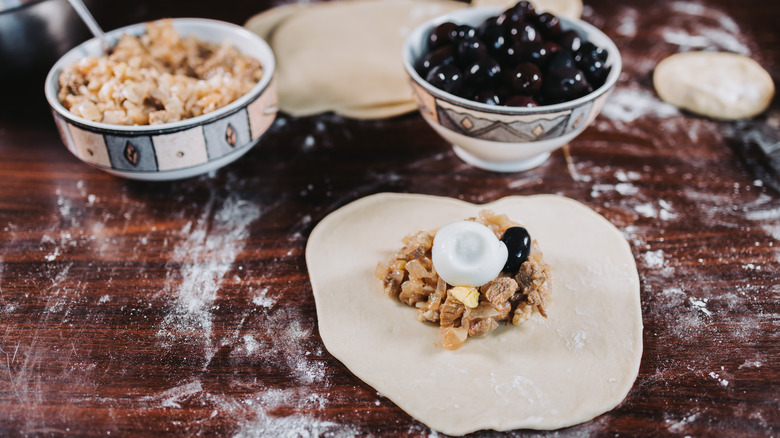The Easiest Ingredient For Perfect Empanada Dough
Empanada recipes are as diverse as the families who pass them down as treasured heirlooms. Each has unique tricks and methods praised as the key to the perfect empanada. Still, all empanadas start with dough — and pastry dough can be fickle, depending on what type of fat you use. Mashed consulted Lorena Cantarovici, the founder and CEO of Maria Empanada, an Argentinian restaurant in Denver, Colorado, to find out which works best.
"The easiest fat to work with in making empanada dough is shortening, and it is what we recommend to anyone making empanada dough at home," Cantarovici advises. Technically, shortening is any fat that remains solid at room temperature. It shortens the gluten strands in dough, giving baked goods a flaky texture. In this case, Cantarovici is referring to vegetable shortenings like Crisco, made with hydrogenated vegetable oil. Commonly used in pie crust (which is similar to empanada dough), it's easier to use than something like tallow or butter due to its soft texture and higher melting point.
One of the mistakes everyone makes with homemade empanadas is using warm ingredients. Shortening's high melting point makes it more forgiving, so it less sensitive to the room temperature or the heat from your hands. Plus, shortening is much softer than butter when chilled, making it easier to cut into the flour.
Shortening is less temperamental and more versatile
As Lorena Cantarovici explains, empanadas can be made with several types of fat, and they all have their benefits and disadvantages. "Butter creates a flaky, but less firm dough," Cantarovici says. That's because butter has a higher water content, evaporating as it cooks and creating flaky layers. However, if butter gets soft too quickly while you're handling the dough, it is more likely to tear — a big problem for something stuffed with filling. Many people use lard for flaky dough, but like butter, it generally has a lower melting point than shortening.
Cantarovici says "beef tallow makes for wonderful dough but it is temperamental to work with." beef fat also comes with a meaty taste, which may not be a flavor you want, depending on your empanada filling. Shortening is great for vegetarian or vegan empanadas, and its flavor neutrality makes it more versatile if you're making a variety of empanadas with different fillings.
If you're a more experienced baker, you can give our homemade empanada dough recipe a whirl. It uses a combination of shortening and butter, giving the dough an extra dose of flavor. However, if you don't want to fuss with solid fat at all, some Argentinian empanadas — like our authentic empanada recipe — call for melted fat at the outset.

